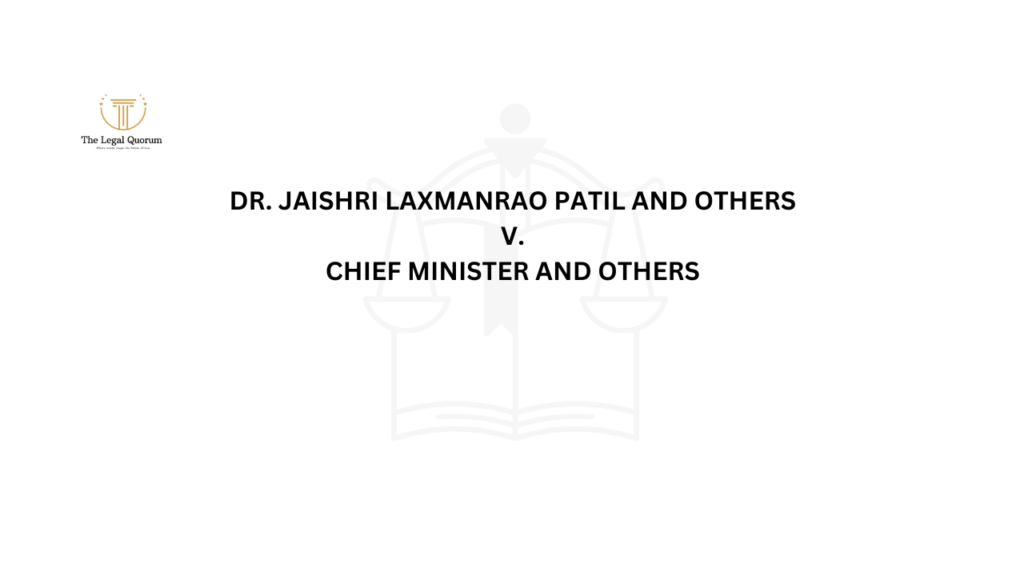Published On: 21st December, 2023
ABSTRACT
This article delves into the intricate dynamics surrounding the misuse of Section 498A of the Indian Penal Code, a provision aimed at addressing cruelty against married women, and its correlation with the alarming issue of dowry deaths. The analysis encompasses legal, societal, and gender perspectives, shedding light on the unintended consequences and challenges posed by the misuse of this legal provision. By exploring historical context, legal cases, and sociocultural factors, the article aims to provide a comprehensive understanding of the multifaceted issues at play. Additionally, it proposes potential reforms and solutions to strike a delicate balance between protecting women from cruelty and preventing the misuse of legal frameworks.
INTRODUCTION
Marriage: Marriage is a social and legal union between individuals that symbolizes commitment and partnership. It includes cultural rituals, and legal contracts and is also known as the foundation of a family, providing rights, responsibilities, and societal recognition.
Cambridge University of Sociology defines marriage as “marriage is a social institution defined by laws, culture, religion.”
Dowry: Dowry is a cultural tradition involving the transfer of money, goods, or property from the bride’s family to the groom’s family during marriage. Historically practiced in various societies, it aims to provide financial support for the newlyweds. However, it has faced criticism for contributing to gender inequality and violence against women. Many countries have implemented laws to curb dowry-related issues and protect women’s rights in marriage.
Section 498A of the Indian Penal Code was introduced with the noble objective of protecting married women from cruelty and harassment within the confines of matrimony. However, over the years, concerns have been raised regarding the misuse of this provision, with some arguing that it has led to unintended consequences, including false accusations and hardships for the accused. Concurrently, the persistent issue of dowry deaths, where brides suffer fatal consequences often related to dowry disputes, underscores the complexity of the legal and social landscape.
HISTORICAL CONTEXT
To comprehend the present-day challenges surrounding Section 498A and dowry deaths, it is essential to delve into the historical context. The dowry system has deep roots in Indian culture, evolving over centuries. Initially intended to provide financial security to the bride, it has, in some cases, transformed into a contentious practice fraught with social and legal implications. Dowry disputes have been a recurring theme in marital relationships, and the legal landscape has evolved to address these concerns.
SECTION 498A: INTENT AND IMPLEMENTATION:
Enacted in 1983, Section 498A specifically addresses cruelty against married women. The provision is non-bailable, making it a potent legal tool to combat domestic violence.
It intends to protect women from harassment or cruelty by their husbands or their relatives. The provision covers a range of acts, including verbal, emotional, and physical abuse. While the primary objective is commendable, the practical application of the law has come under scrutiny, with accusations of misuse becoming a cause for concern.
MISUSE OF SECTION 498A:
Critics argue that Section 498A has been weaponized in marital disputes, leading to false accusations and undue hardships for the accused, often including elderly family members. The provision, which was intended to be a shield for vulnerable women, has at times become a weapon in acrimonious marital conflicts. Cases of exaggerated or false claims, driven by motives such as revenge or financial gain, have been reported, prompting a reevaluation of the law’s effectiveness and fairness.
IMPACT ON FAMILIES:
The unintended consequences of Section 498A misuse extend beyond legal ramifications. Families implicated in false cases may face social ostracism, financial ruin, and reputational damage. Moreover, elderly family members, including parents and in-laws, often find themselves entangled in legal battles, facing arrest and incarceration. This has led to calls for a reevaluation of the legal framework to prevent its misuse while ensuring the protection of genuine victims.
DOWRY DEATHS: A PERSISTENT TRAGEDY:
Parallel to concerns about Section 498A misuse is the persistent issue of dowry deaths. These tragic incidents involve the death of a bride under suspicious circumstances, often linked to disputes over dowry payments. Despite legal provisions aimed at curbing this practice, dowry deaths continue to occur, highlighting the deep-seated nature of the dowry system and its associated challenges.
THE INTERPLAY OF SOCIOECONOMIC FACTORS:
Understanding the misuse of Section 498A and dowry deaths requires a nuanced examination of socioeconomic factors. The dowry system is often intertwined with social expectations, economic disparities, and gender dynamics. Traditional norms and expectations regarding marriage, dowry, and familial responsibilities contribute to the complexity of these issues, making them deeply rooted in societal structures.
REFORMS AND CHALLENGES:
Addressing the challenges posed by the misuse of Section 498A and dowry deaths requires a comprehensive approach. Legal reforms, such as the introduction of mediation and counseling services have been proposed to mitigate the adversarial nature of marital disputes. However, implementing reforms faces challenges, including resistance from various quarters and the need for societal shifts in attitudes towards marriage, gender roles, and dowry.
POTENTIAL SOLUTIONS:
Balancing the scales between protecting women from cruelty and preventing the misuse of legal provisions necessitates thoughtful solutions. Strengthening legal safeguards, promoting awareness campaigns, and fostering societal changes are crucial to an effective strategy. Additionally, enhancing support systems for victims of domestic violence and streamlining legal procedures can contribute to a more just and equitable resolution of these complex issues.
CASES ILLUSTRATING SECTION 498A MISUSE:
Sunita Devi vs State of Bihar (2005): In this case, a husband’s family was falsely accused under Section 498A, leading to their arrest. Subsequently, investigations revealed the allegations were motivated by a property dispute, highlighting the misuse of the law for personal vendettas.
Rajesh Sharma vs State of UP (2017): The Supreme Court acknowledged the misuse of Section 498A and laid down guidelines to prevent arbitrary arrests.
This landmark case underscored the need for a balanced approach to protect genuine victims while preventing the misuse of legal provisions.
Nisha Sharma Case (2003): The case gained widespread attention when Nisha Sharma called off her wedding due to dowry demands. While she used legal avenues responsibly, it brought to light the prevalent issue of dowry harassment and the importance of women asserting their rights.
DOWRY DEATHS: REALITIES AND CHALLENGES:
Bhanwari Devi Case (1992): Bhanwari Devi, a social worker, faced backlash for intervening in a child marriage. Subsequently, she was raped, and the case highlighted the societal resistance to challenging traditional norms, often linked to dowry practices.
Arushi Talwar Case (2008): While not a typical dowry death case, the Arushi Talwar case exposed societal prejudices and media sensationalism. The Tragic murder underscored the broader issue of violence against women and the challenges in seeking justice.
SOCIOECONOMIC FACTORS AND THEIR IMPACT:
Asha Rani vs State of Punjab (2003): Asha Rani’s case exemplifies how economic factors contribute to dowry disputes. Unable to meet her in-laws’ demands, she faced abuse and ultimately succumbed to burn injuries, highlighting the nexus between dowry, socioeconomic disparities, and gender-based violence.
Satyam Babu vs State of A.P. (2011): Satyam Babu’s case, while not directly related to dowry, exemplifies the economic pressures that can lead to false accusations. Falsely implicated in a crime, Babu’s life took a tragic turn, showcasing the wider repercussions of legal vulnerabilities.
LEGAL PRECEDENTS SHAPING THE DISCOURSE:
Kalyani vs State of Tamil Nadu (2012): This case emphasized the need for a nuanced approach to dowry-related cases, acknowledging the societal context and individual circumstances. It underscored the importance of differentiating between genuine cases and those driven by ulterior motives.
Sushil Kumar Sharma vs Union of India (2005): The Supreme Court’s observations in this case highlighted the gravity of dowry-related violence and reiterated the importance of strict legal measures to curb the menace. It called for a collective effort to address the root causes of dowry deaths.
REFORMS AND ONGOING CHALLENGES:
Protection of Women from Domestic Violence Act (2005): This legislation aimed to provide a broader legal framework to address various forms of domestic violence, including dowry-related abuses. However, its effectiveness and implementation have faced challenges, and ongoing reforms are necessary. Rise in False Dowry Cases Post Guidelines (2017): Despite the guidelines laid down in the Rajesh Sharma case to prevent arbitrary arrests under Section 498A, concerns persist about an increase in false dowry cases. Striking a balance between protecting genuine victims and preventing misuse remains a significant challenge
CONCLUSION:
In conclusion, the nexus between the misuse of Section 498A and dowry deaths in India is a multifaceted issue that requires careful consideration from legal, societal, and gender perspectives. While acknowledging the importance of protecting women from domestic cruelty, it is imperative to address the unintended consequences of legal provisions and the persistent challenges associated with the dowry system. Striking a balance between justice for victims and safeguards against misuse necessitates a collaborative effort from legal authorities, policymakers, and civil society to create a more equitable and compassionate framework for addressing these complex issues.




